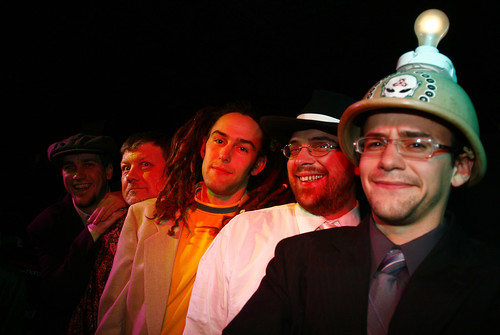
What There Is to Say
-- Jerome Eric Copulsky
Classes at Virginia Tech resume this week, and the cacophonous presence of the media that had settled upon the campus has begun to dissipate. Students clad in orange and maroon mull about the Drillfield; some toss Frisbees, kick soccer balls, fly kites. Others gather by the newly placed memorials, inscribing their thoughts and prayers on huge placards, leaving flowers and candles, VT memorabilia and Bibles, before heading off to class.
But classes this week will not be as they were before, and like many other professors here, I have been thinking about what I should do when I enter the classroom. In the face of such horror, what can we possibly teach our students?
There is a well-known story in the Talmud, that great compendium of Jewish law and lore, which describes an encounter between Moses and God on Mount Sinai. When Moses ascended the mountain to receive the Torah, he found God adorning the letters of the book with crowns. Confused, the prophet asked God why he was adding these seemingly meaningless designs. God answered that many generations later a great Sage named Akiba ben Joseph would expound "heaps and heaps of laws" from these jots and tittles, and allowed Moses to appear in Rabbi Akiba's classroom and experience the genius of his teaching.
But when Moses asked about Akiba's reward, he was shown the brutal aftermath of Akiba's eventual martyrdom, the rabbi's flesh weighed out at the market-stalls. " 'Lord of the Universe,' cried Moses, 'such Torah, and such a reward!' He replied, 'Be silent, for this is the way I have determined it.' "
This is one of many texts that I have my students read and grapple with in my Judaism class. Over the past few days, I've been thinking about this story and my students' encounters with it. Understandably, they are usually disturbed and perplexed by it. Many resist the denial of a rational connection between the great Sage's deeds and his earthly fate. How could such Torah earn such reward? Why does Akiba meet such a terrible end? Why does Moses not receive a vision of the Rabbi teaching in paradise? How can silence be the end of the story?
Moses' curiosity about Rabbi Akiba, and his shock at discovering the great Sage's end, implies that there ought to be a rational connection between one's deeds and one's fate. But the tale challenges that relationship -- and this may be the point. Its refusal of explanation exposes the limits of our knowledge and understanding, providing not easy solace but a profound and troubling awe. Like Moses, the reader is left mute, encountering only the haunting paradox of a divinity at once intimate and utterly inscrutable.
Religious traditions and communities, I suggest to my students, are involved in building -- and maintaining -- a meaningful world. This is an ongoing struggle, in which the beliefs and practices of the past are drawn upon to explain the present. At times, human beings find it difficult to square their inherited conceptions of ultimate reality and their own experiences, and the tradition is challenged, deepened, transformed. Confronted by the ineffable mystery of the cosmos, they hear the complaint of Job, the lament of the Psalmist, the command: "Be silent."
Much has already been said about the tragedy at Virginia Tech. Much more will be said over the coming days, weeks, and years. There are many things we will, and should, speak about. As scholars and teachers, our job is to try to understand and interpret the world, and we encourage our students to do so as well. We will resist glib answers and facile explanations. We will attempt to fathom the psyche of the gunman, to comprehend how he turned into a monster who tried to cloak himself in the language of suffering and martyrdom. We will discuss the violence so prevalent in our society, gun control, the failures of our mental health system. We will reflect upon the fact that so much of the evil we endure, here and elsewhere, is of all-too-human origin.
Perhaps most importantly, we will speak of the victims. We will speak about those we knew and learn about those we did not from the people they have touched. We will recount their hopes and their deeds, and we will try to keep their memory alive in the way we conduct our lives.
But with my students I can go no further. When I step into the classroom this week I reach my limits as a teacher. I know that many students are struggling with how to reconcile the events of April 16th with their own beliefs and commitments. That thirty-two lives have been cut short, that thirty-two worlds have been destroyed by a madman's bullets defies all understanding. I will find no reason for this tragedy, no explanation for why on that blustery spring morning a young man's rage turned on those students and teachers.
Facing my students, my colleagues, the survivors, and the families of the deceased, after I have offered my words of consolation, I will reach the limits of my understanding and will take heed of those austere words uttered to Moses: "Be silent."
Jerome Eric Copulsky is Assistant Professor and Director of Judaic Studies at Virginia Tech.
Sightings comes from the [ http://marty-center.uchicago.edu/ ]Martin Marty Center at the University of Chicago Divinity School.

















